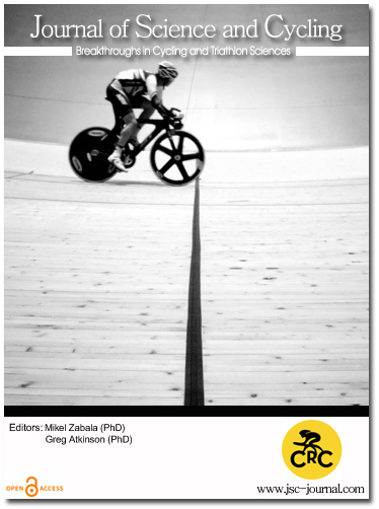Field tests with an instrumented bicycle for comfort measurements
Abstract
High frame stiffness is one of the most important parameters a racing bicycle should fulfil, it shows advantages in steering stability and a smaller amount of pedalling power is lost due to frame deflection. On the contrary, increased stiffness may attenuate the shock absorption ability of the frame and consequently leading to lack of comfort for the cyclist. This work proposes the absorbed power and whole-body-vibration (ISO-weighting) analysis to measure comfort during outdoor field tests. Absorbed power is measured in Watt, whole-body-vibration is represented as RMS acceleration. Force- and acceleration sensors are designed and installed onto the bicycle near the contact points of cyclist and bicycle, at the saddle and the handlebar. Force is measured through strain gauge configurations and velocity is obtained from integrating acceleration data. The data acquisition system, which is carried by the cyclist, is able to read and store data from 14 sensors simultaneously. Combining both the sensor design and the data acquisition configuration allows for in-situ measurements during outdoor conditions. Acceleration analysis shows that the saddle vibration amplitude increases with speed, though; raising the cycling speed at cobblestones tends to limit the perceived vibration amplitude at the saddle. It is also observed that the rear wheel acts as a filter for road vibrations. The vibration level decreases significantly when comparing the amplitude at the rear wheel axis and the saddle. It can be concluded that the wheel type and tyre pressure has a major contribution in attenuating road vibrations from cobblestones.When comparing the acceleration –and absorbed power frequency spectrum it is seen that the frequency range shifts considerably. The acceleration signal has its dominant peaks near 20-25 Hz whereas the dominant frequencies in the absorbed power spectrum are concentrated in the range below 20 Hz. This could possibly shed another light on analysing human comfort when the absorbed-power method is used instead of acceleration data only. With the absorbed power method, it is also possible to measure accurately the effect of the cyclist’s position on comfort perception. E.g. if the cyclist applies less handlebar grip force, this will generate higher acceleration amplitudes, though the contact force will decrease. Consequently, the whole-body-vibration analysis results in less comfort because of increased acceleration, whereas the absorbed power value shows a lower magnitude because both force and acceleration are taken into account. Hence, the absorbed power analysis is a better measure for the comfort perception of the cyclist.Downloads
Published
How to Cite
Issue
Section
Copyright (c) 2014 Journal of Science and Cycling

This work is licensed under a Creative Commons Attribution-NonCommercial 4.0 International License.
Authors contributing to Journal of Science and Cycling agree to publish their articles under a Creative Commons CC BY-NC-ND license, allowing third parties to copy and redistribute the material in any medium or format, and to remix, transform, and build upon the material, for any purpose, even commercially, under the condition that appropriate credit is given, that a link to the license is provided, and that you indicate if changes were made. You may do so in any reasonable manner, but not in any way that suggests the licensor endorses you or your use.
Authors retain copyright of their work, with first publication rights granted to Cycling Research Center.






